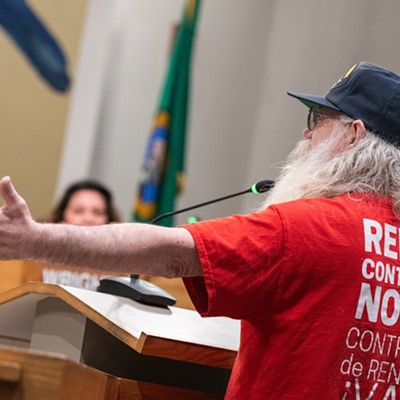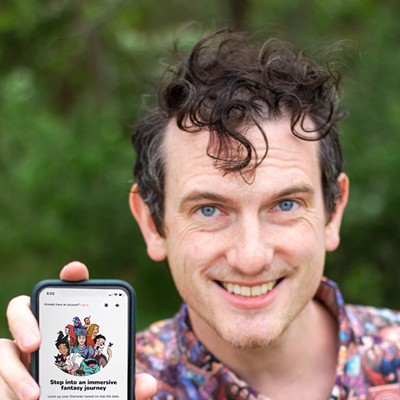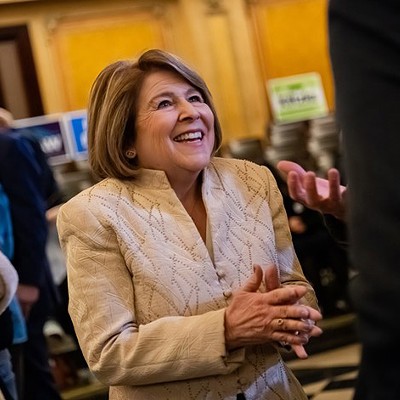Book Review
[
{
"name": "Broadstreet - Instory",
"component": "25846487",
"insertPoint": "4",
"requiredCountToDisplay": "4"
},{
"name": "Broadstreet - Empower Local",
"component": "27852456",
"insertPoint": "8",
"requiredCountToDisplay": "8"
},{
"name": "Broadstreet - Instory",
"component": "25846487",
"insertPoint": "12",
"requiredCountToDisplay": "12"
},{
"name": "Broadstreet - Instory - 728x90 / 970x250",
"component": "27852677",
"insertPoint": "18",
"requiredCountToDisplay": "18"
},{
"name": "Broadstreet - Instory",
"component": "25846487",
"insertPoint": "5th",
"startingPoint": "23",
"requiredCountToDisplay": "24",
"maxInsertions": 100
}
]
by JACOB H. FRIES & r & & r & Wild Nights! & r & by Joyce Carol Oates & r & & r & & lt;span class= "dropcap " & I & lt;/span & n Wild Nights!, Joyce Carol Oates imagines the final days of five literary lions: Poe, Dickinson, Twain, James and Hemingway. Blending fact and fiction -- generally, a larger helping of fiction -- she tries to assume each writer's voice as she builds stories about the iconic figures. By the title, and its exclamation point, one might assume that Oates set out to create celebratory stories about the adventures of some great, albeit troubled, American carousers. (Picking up the book, I was excited to read about Hemingway having a grand ol' time in Key West, however fictionalized.)
But Oates had no such notion, instead preferring to imagine the writers at the ends of their lives, in the twilight of genius, as their bodies and minds fail. Her section about Hemingway, for example, is set in Ketchum, Idaho, in 1961 -- a far cry from the bright and sunny Florida Keys -- and opens with Papa fantasizing about the end. "He wanted to die. He loaded the shotgun," the story begins. "His head was leaking. And you could smell it: greeny pus. His brain was inflamed, swollen." Not exactly cheery stuff. The Hemingway of Oates' imagining is a pitiful old man who can't write, walk without a cane or get an erection -- all of which may have been true -- but one can't help feeling depressed about this account. Even giants, Oates seems to say, piss themselves in the end.
And perhaps that's how she feels. Oates' husband of 48 years died in February. And she herself is knocking on the door of 70 -- the age she gave to Mark Twain in the story "Grandpa Clemens & amp; Angelfish." In it, we see Twain seeking the attention of schoolgirls -- "not a day younger than ten and not a day older than fifteen" -- who remind him of his dead daughter Suzy. He gives the girls gifts and they, he thinks, help him write as he once did (which, of course, he can't actually do).
While Wild Nights! celebrates these writers by exemplifying their styles, it's really too depressing to inspire any rereadings.
But Oates had no such notion, instead preferring to imagine the writers at the ends of their lives, in the twilight of genius, as their bodies and minds fail. Her section about Hemingway, for example, is set in Ketchum, Idaho, in 1961 -- a far cry from the bright and sunny Florida Keys -- and opens with Papa fantasizing about the end. "He wanted to die. He loaded the shotgun," the story begins. "His head was leaking. And you could smell it: greeny pus. His brain was inflamed, swollen." Not exactly cheery stuff. The Hemingway of Oates' imagining is a pitiful old man who can't write, walk without a cane or get an erection -- all of which may have been true -- but one can't help feeling depressed about this account. Even giants, Oates seems to say, piss themselves in the end.
And perhaps that's how she feels. Oates' husband of 48 years died in February. And she herself is knocking on the door of 70 -- the age she gave to Mark Twain in the story "Grandpa Clemens & amp; Angelfish." In it, we see Twain seeking the attention of schoolgirls -- "not a day younger than ten and not a day older than fifteen" -- who remind him of his dead daughter Suzy. He gives the girls gifts and they, he thinks, help him write as he once did (which, of course, he can't actually do).
While Wild Nights! celebrates these writers by exemplifying their styles, it's really too depressing to inspire any rereadings.
















